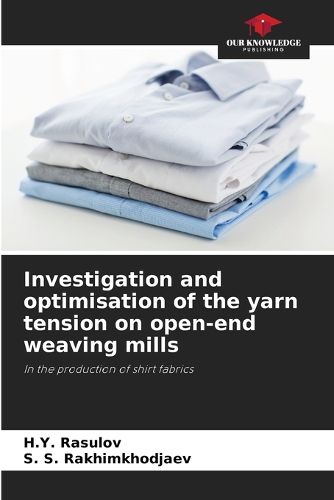Readings Newsletter
Become a Readings Member to make your shopping experience even easier.
Sign in or sign up for free!
You’re not far away from qualifying for FREE standard shipping within Australia
You’ve qualified for FREE standard shipping within Australia
The cart is loading…






The work is devoted to the research and optimization of thread tension on the shuttleless weaving machines during the production of shirt fabrics. On the basis of the theory of wave propagation in elastic medium it is established that the cause of weft thread breaks is the impact of the brake foot on the weft thread, at increasing the laying speed, the deformation and tension of the weft thread increase on average by 30% and at increasing the coefficient of friction of the thread on the surface of the laying mechanisms, the tension and deformation of the weft thread decrease by 19%. A new system of weft braking and feeding is developed and tested. Regularities of change in the tension of the weft depending on the friction radius, friction angle, friction coefficient, stiffness of the weft and compensator position have been obtained. A stand and methodology for determining the friction coefficient in the compensator eye, depending on the friction radius, type and linear density of yarn, type of the compensator working surface have been developed. Theoretical expert studies of warp tension for the existing and new system were carried out, where the feasibility of using the new system of regulating the warp tension per machine cycle was shown.
$9.00 standard shipping within Australia
FREE standard shipping within Australia for orders over $100.00
Express & International shipping calculated at checkout
The work is devoted to the research and optimization of thread tension on the shuttleless weaving machines during the production of shirt fabrics. On the basis of the theory of wave propagation in elastic medium it is established that the cause of weft thread breaks is the impact of the brake foot on the weft thread, at increasing the laying speed, the deformation and tension of the weft thread increase on average by 30% and at increasing the coefficient of friction of the thread on the surface of the laying mechanisms, the tension and deformation of the weft thread decrease by 19%. A new system of weft braking and feeding is developed and tested. Regularities of change in the tension of the weft depending on the friction radius, friction angle, friction coefficient, stiffness of the weft and compensator position have been obtained. A stand and methodology for determining the friction coefficient in the compensator eye, depending on the friction radius, type and linear density of yarn, type of the compensator working surface have been developed. Theoretical expert studies of warp tension for the existing and new system were carried out, where the feasibility of using the new system of regulating the warp tension per machine cycle was shown.